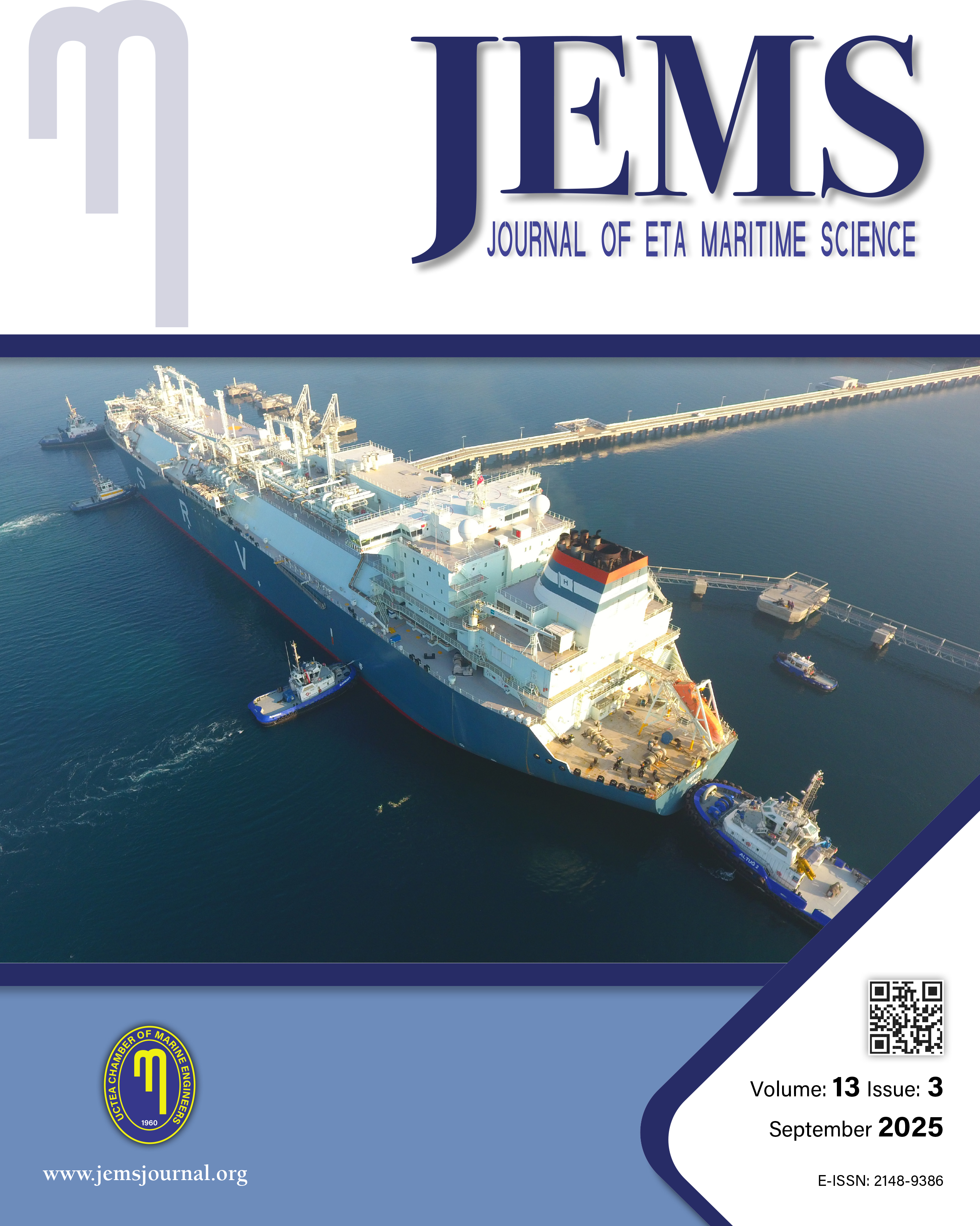

JEMS apply the Creative Commons Attribution NonCommercial 4.0 International Licence to all manuscripts to be published
Optimized propellerPBCF spacing for enhanced ship propulsion efficiency
Mohamad Yamin, Rudi Irawan, Riyan Firmansyah, Muhammad Rizky MaulanaDepartment of Mechanical Engineering, Gunadarma University, Depok, IndonesiaShip propulsion efficiency plays a crucial role in reducing fuel consumption and greenhouse gas emissions in the maritime industry. While Propeller Boss Cap Fins (PBCFs) are widely adopted to suppress hub vortices and enhance wake flow, the influence of axial spacing between the propeller and PBCF remains underexplored. This study examines the impact of propellerPBCF spacing on hydrodynamic performance using Computational Fluid Dynamics (CFD) simulations based on the Reynolds-Averaged NavierStokes (RANS) approach in ANSYS Fluent 2023. A 600 mm B-series propeller representative of electric boat applications was modeled. Numerical reliability was ensured through grid independence testing and validation against experimental data. Key performance parametersthrust and torque coefficients, wake fraction, pressure distribution, and turbulence kinetic energy (TKE)were analyzed. Results indicate that axial spacing significantly affects wake dynamics and propulsive efficiency. The optimal configuration occurred at a axial spacing ratio of 0.2c (31.2 mm), yielding a 2.25% efficiency improvement at an advance coefficient (J) = 0.346 compared with the baseline. Flow visualization revealed reduced wake asymmetry, diminished low-pressure cores, and lower turbulence intensity. These results identify axial spacing as a previously neglected but practical design variable for improving propeller hydrodynamics and advancing energy-efficient ship propulsion.
Keywords: Ship Propulsion Efficiency, Propeller Boss Cap Fin (PBCF), Axial Spacing Optimization, Computational Fluid Dynamics (CFD), Hydrodynamic PerformanceManuscript Language: English










